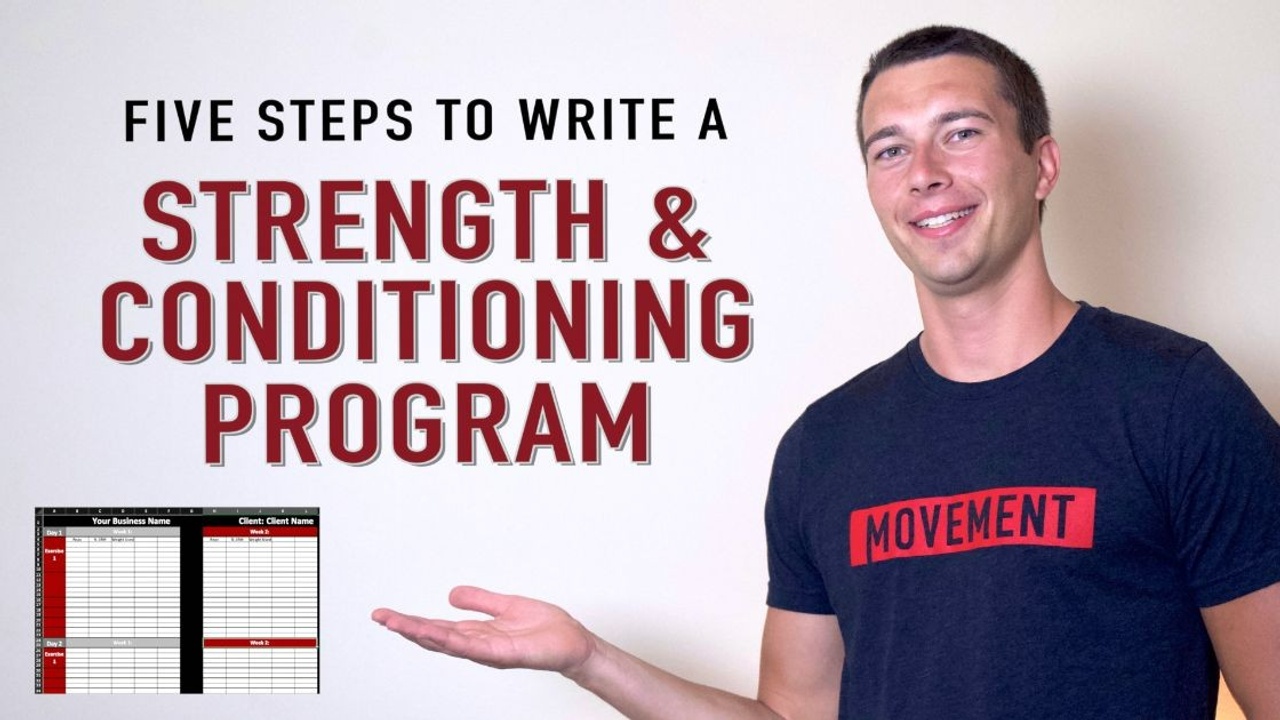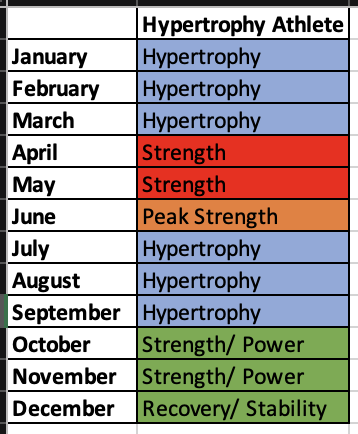CSCS: How to Write a Strength and Conditioning Program
Dec 23, 2022
Edited by: Danielle Abel
How to Write a Strength and Conditioning Program in Five Steps
Writing a S&C program can definitely feel overwhelming, especially if you're starting from a blank page.
Start with a template! (You can download ours here).
You can use Google Sheets, Excel, or coaching software like TrainHeroic, Strength Coach Pro, or TrueCoach. Any of these will work; you just need to decide on one and start.
After you've done it a few times you'll have a better feel for what works best for you, but the learning comes from doing and implying writing a strength and conditioning program, even if it's not perfect to start.
If you're a visual learner, the video below might be really helpful for you.
Needs Analysis
Start here - a needs analysis will help you design a strength and conditioning program based on specific client or athlete considerations. The more specific your needs analysis is, the more specific you can make your program to improve adaptations.
Considerations might include:
- Client/athlete goals
- Most recent training status
- Injury history
- Current strength, power, or endurance
- Body composition considerations
You can choose some or all of these, but keep in mind you'll want to find something to measure to determine if your training program has been effective.
Additionally, you'll want to use your needs analysis to guide your annual training program, like the example below for a hypertrophy athlete.

Suppose you wanted to evaluate movement competency. In that case, you could assign a movement analysis with the client online by assigning some specific exercises for them to perform and send videos back to you or just complete the analysis during their first session with you if you're meeting in person.
Training Frequency
You'll want to help the client determine how often they can train. You can help them determine the frequency of their training by evaluating what they are used to (not training at all, training 1-2x per week inconsistently, training consistently 4-5x per week, etc) and comparing that to their goals.
Some training frequency examples might include:
- Upper/Lower split 4x per week
- Full Body 3x per week
- Full Body/Conditioning 4x per week
- Push, Pull, Legs 6x per week
Some key points that could help you in deciding training frequency might include:
- Client's ability to adhere
- Client's ability to recover well
Starting Volume
We don't want to increase volume too much right away. Their baseline is also known as their chronic workload. Chronic workload can be defined simply as what their body is currently used to.
In general, we want to increase volume by no more than 30% because it will put them at a higher risk for injury. Volume could be the length of the training session or the length of all training sessions combined for the week or month, for example.
Keep in mind that we want to manage recovery so that the client can repair the muscle tissue that is being broken down. The reparative process is going to come from having adequate rest days and an adequate amount of calories & macronutrients coming in related to their nutrition.
A good rule of thumb to follow is only increasing volume by 10-30% every few weeks. Remember that more is not better here, especially for long-term progress.
Periodization Strategy & Progression Schemes
This is the last portion of writing a good S & C program because it allows you to focus on short-term and long-term adaptations that the client or athlete needs for their goals or sport.
Having logic behind training month to month, quarter to quarter, and year to year, for example, allows you to advance your knowledge & application above personal trainers who are just writing singular workout sessions for clients or athletes without much thought into long-term training needs.
You can use linear or undulating periodization, for example, depending upon your needs analysis. Further yet, you might progress volume or intensity as a part of your progression scheme.
There are many ways to periodize and progress your training, so try to keep that in mind as your approach programming.
Keeping documentation of your logic can really help, especially as you program ongoingly for your clients or athletes. Documentation might include things like starting sets of volume, training split, progression schemes, training approaches, & exercise progressions.
Having a system to organize your logic is key, and we can help!
Support & Courses Available
Ready for even more support? Our Program Design 101 Course teaches you exactly how to organize an annual training plan and provides sport-specific examples, and even includes done for you programming templates by phase. Click the link here to check it out.
Stay connected with news and updates!
Join our mailing list to receive the latest news and updates from our team.
Don't worry, your information will not be shared.
We hate SPAM. We will never sell your information, for any reason.

